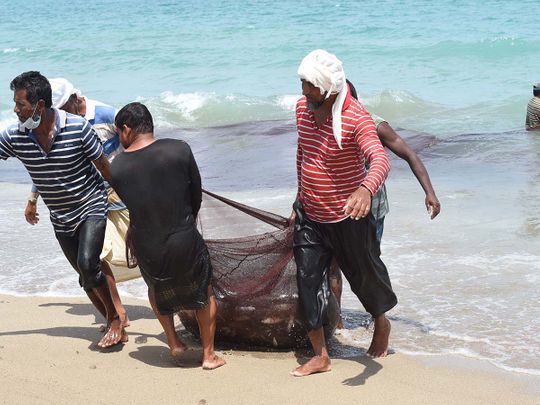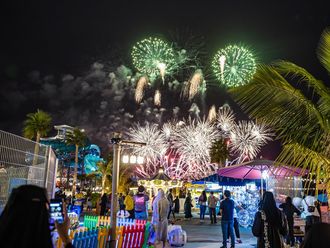
Abu Dhabi: Abu Dhabi’s fisheries have recently seen the highest maximum length recorded for hamour in the past 20 years — 113 centimetres. This is a significant achievement because it indicates that fish stocks in the emirate are becoming more sustainable.
The emirate’s environment regulator, the Environment Agency Abu Dhabi, announced that fisheries had become 10 times more sustainable in 2020 than in 2018, as measures by the Sustainable Exploitation Index for fisheries. The index had increase from 5.7 per cent in 2018 to 57.1 per cent in 2020.
Hamour thriving
In particular, the portion of fish stocks that is old enough to spawn, thus allowing for renewal of stock — known as the Spawning Biomass per Recruit (SBR) — doubled for hamour (Epinephelus coioides) from 7.1 per cent in 2019 to 15.8 per cent in 2020, and increased for kingfish (Scomberomorus commerson) from 17.3 per cent in 2018 to 20.5 per cent in 2020.
The EAD said this improvement in the index showed a noticeable improvement in the state of fish stocks during 2020 for some of the major commercially fished species in Abu Dhabi waters.
Other species
Ahmed Al-Hashemi, EAD’s acting executive director of terrestrial and marine biodiversity sector, attributed the improvement in the indices to continuous monitoring, and managerial decisions taken on the basis of sound scientific information.
Other fish species have also become more sustainable, with the SBR increasing from 19.4 per cent in 2013 to 36.8 per cent in 2020 for Dhil’e (Scomberoides commersonnianus), and from 22.6 per cent in 2014 to 32.7 per cent in 2020 for Jesh Um Al Hala (Carangoides bajad). The SBR also increased for Shaari (Lethrinus nebulous) from 11 per cent in 2018 to 16.6 per cent in 2020.
Increasing landings
Some fish species have also increased their landings in Abu Dhabi waters. Al Hashemi said Aifah (Chanos chanos) increased from 25 tons in 2019 to 78 tons in 2020, and the Safi Arabi (Siganus canaliculatus) increased from 35 tons in 2019 to 46 tons in 2020.
In addition, the EAD also recorded large specimens of Hamam (Seriola dumerili), with some of them spanning more than 100 centimetres in length. According to the EAD’s historical data, this is a rare event.
EAD measures
Specific EAD measures have contributed to the improvement in sustainability, including the effective management of marine protected areas, the implementation of a commercial and recreational fisheries licensing system, and a seasonal ban on fishing during breeding season. The EAD has also regulated the use of fishing gear, and prohibited the use of fishing nets and traps, so that species vulnerable to overexploitation will not be targeted.
“Like other countries, fisheries in the UAE are being depleted as a result of a combination of natural and human factors. Pressures, such as the overexploitation of fisheries and the acute depletion of fish species has led to a decline in the stocks of many major commercial species to unsustainable levels, compared to global rates. EAD has therefore taken a series of measures and implemented procedures that will reduce the pressure on fisheries in the commercial and recreational sectors. This involves improving fish stocks, rehabilitating fisheries habitats and intensifying efforts to control and reduce this depletion. These measures taken by the agency aim to achieve sustainable fisheries, including restoring balance and sustainability of fish stocks and developing the aquaculture sector,” said Dr Shaikha Salem Al Dhaheri, EAD secretary general.






